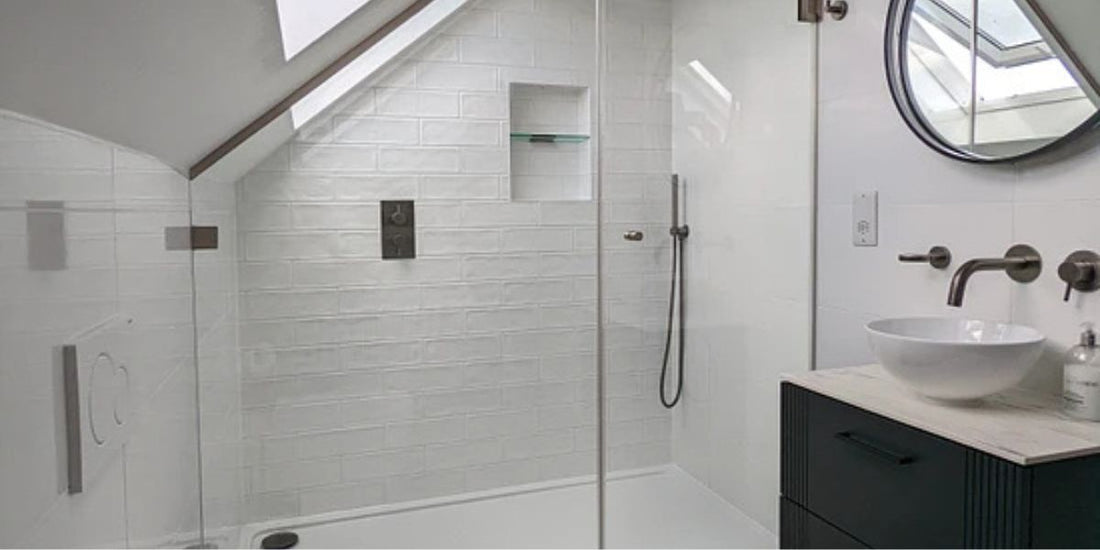
The rise of water-efficient bathroom tech: What's Driving It?
Share
As the world grapples with the pressing issue of water scarcity, the **rise of water-efficient bathroom tech** stands at the forefront of sustainable innovation. This emerging trend is not only reshaping our homes but also paving the way for a new era in water conservation. As tech professionals and enthusiasts, it becomes essential to understand the driving forces behind this evolution and its implications for the future.

A New Era of Bathroom Innovations
The bathroom, a haven for relaxation and personal care, is undergoing a significant transformation. With the advent of **smart technologies**, bathrooms are becoming more than just spaces for hygienethey are evolving into hubs of efficiency and sustainability. **Water-efficient bathroom technologies** are designed to minimize water usage without compromising on comfort and functionality. From smart showers and faucets to innovative toilets, these advancements are set to revolutionize how we interact with water in our daily lives.
Smart Showers and Faucets
At the heart of these innovations are smart showers and faucets. Equipped with sensors and programmable settings, these devices can optimize water flow, temperature, and duration, ensuring minimal wastage. For instance, smart showers can be pre-set to specific temperatures, eliminating the need to run water endlessly to achieve the desired warmth. Similarly, motion-sensor faucets stop the flow of water when not in use, significantly reducing water consumption.
Innovative Toilets
The traditional toilet is undergoing a radical redesign. **Water-saving toilets** are becoming increasingly popular due to their ability to reduce water usage by up to 60%. Dual-flush systems, pressure-assisted mechanisms, and low-flow models are all part of this transformation. These toilets are designed to use less water per flush without sacrificing performance, making them an excellent choice for both homes and businesses. Learn more about water-saving toilets for businesses.
Driving Forces Behind the Rise
The surge in water-efficient bathroom tech is driven by a combination of environmental, economic, and technological factors. Lets delve into each of these to understand their impact.
Environmental Imperatives
Water scarcity is a global concern, with predictions suggesting that half of the worlds population could be living in water-stressed areas by 2025. This alarming statistic has prompted a push towards water conservation measures, with **bathroom technologies** playing a pivotal role. By integrating smart technologies, we can significantly reduce water wastage, alleviating pressure on our natural resources.
Economic Incentives
Besides environmental benefits, water-efficient technologies offer substantial economic advantages. Reduced water consumption leads to lower utility bills, making these innovations financially appealing to homeowners and businesses alike. Governments and environmental agencies are also offering incentives and rebates to encourage the adoption of water-saving technologies.
Technological Advancements
The rapid advancement of technology has made it possible to design and implement sophisticated water-saving solutions. From the Internet of Things (IoT) to artificial intelligence (AI), these technologies are being harnessed to create smarter and more sustainable bathroom solutions. For example, IoT-enabled devices can monitor water usage patterns and provide insights to help users optimize their consumption.
Challenges and Considerations
Despite the promising benefits, the adoption of water-efficient bathroom tech does face some challenges. The initial cost of installation and the need for regular maintenance can be deterrents for some users. Furthermore, there is a learning curve associated with using new technologies, which may require additional education and support.
Overcoming Barriers
To overcome these challenges, it is crucial to invest in awareness campaigns and educational programs that highlight the long-term benefits of water-efficient technologies. Additionally, manufacturers should focus on creating user-friendly interfaces and providing comprehensive after-sales support to ensure a smooth transition for users.
The Future of Water-Efficient Bathroom Tech
The future of **water-efficient bathroom tech** is bright, with continuous innovations on the horizon. As these technologies become more accessible and affordable, we can expect widespread adoption in homes and businesses worldwide. The integration of AI and machine learning could further enhance the efficiency of these systems, offering personalized and automated solutions for water conservation.
Collaborative Efforts
The success of water-efficient bathroom tech hinges on collaborative efforts between manufacturers, governments, and consumers. By working together, we can accelerate the development and implementation of sustainable technologies that benefit both the environment and society. For more insights, check out this comprehensive guide on water-saving toilets.
Conclusion
The **rise of water-efficient bathroom tech** is a testament to human ingenuity and our commitment to preserving the planet. As tech professionals and enthusiasts, embracing these advancements not only aligns with our passion for innovation but also contributes to a more sustainable and eco-friendly future. By staying informed and advocating for smart water solutions, we can play a pivotal role in shaping the future of bathroom technologies.

FAQs
What are the benefits of water-efficient bathroom tech?
Water-efficient bathroom tech helps conserve water, reduce utility bills, and lower environmental impact. It also enhances the functionality and comfort of bathroom spaces.
Are water-efficient products expensive?
While the initial cost may be higher, the long-term savings on water bills and potential rebates make them a cost-effective choice in the long run.
How can I transition to a water-efficient bathroom?
Start by replacing old fixtures with modern, water-efficient models. Consider consulting with professionals for advice on the best solutions for your home or business. For more tips, visit this guide on water-efficient bathroom fixtures.
This article contains affiliate links. We may earn a commission at no extra cost to you.
